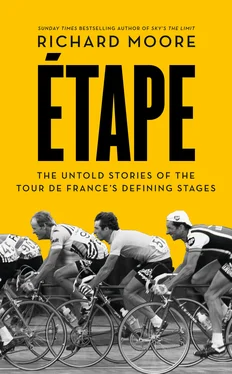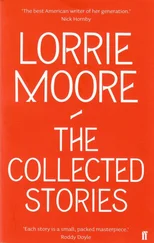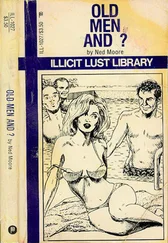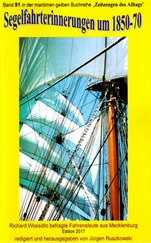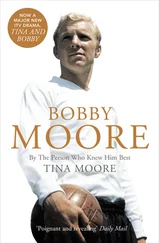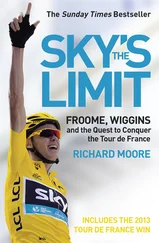He used to react in the same way if somebody attacked him on a bike. One of his previous directors, Paul Köchli, has attempted to analyse the trait that made Hinault such a formidable competitor: ‘What made Hinault so successful was that he would act very emotionally in a race when he is challenged.’ When confronted by a podium invader, the same instinct surfaces. ‘The podium is Hinault’s space – he is responsible for it – and if someone is challenging him … even if the guy is two metres twenty tall, Hinault will take him on and take him down.’
It suggests some primal instinct. ‘The Badger was a boxer,’ says another of his former directors, Cyrille Guimard. ‘He needed to be permanently squared up to someone, in opposition to someone. He needed combat.’
* * *
Almost every race that he started in 1980 seemed to add another chapter to the Hinault legend. There was Liège–Bastogne–Liège, the late spring classic in the Ardennes, with its succession of short but steep climbs. This year was harder than ever, on account of the weather. It snowed almost from the start. After 70km of the 260km race, 110 of the 170 starters had abandoned. Even Hinault considered abandoning. But with 80km remaining, he did the opposite: he attacked. He could barely see through the thickening snow; he raised a hand to his face to protect his eyes, to be able to decipher the road.
‘My teeth were chattering and I had no protection against the cold, which was getting right inside me,’ he said later. ‘I decided that the only thing to do was ride as hard as I could to keep myself warm. I didn’t look at anything. I saw nothing. I thought only of myself.’
He caught the two escapees who had been freezing out front, dropping them and continuing alone. By now he was riding into a blizzard. His hands were numb, making changing gear and braking difficult. Yet he ploughed on through the snow, a fleet of vehicles gathering behind – windscreen wipers swishing – and making fresh tracks in the snow, as Hinault was doing just ahead of them. The observers in their warm vehicles must have wondered, with voyeuristic curiosity, how long he could endure; when he would bow to the inevitable. But there was no question of Hinault quitting. If anything might have persuaded him to carry on, it was the thought that people were following him, awaiting his capitulation. Similarly, he seemed to derive strength from the riders who abandoned and were back in their warm hotel on the finishing straight; as though, merely by carrying on, he was making his point.
By the time he reached Liège, Hinault was ten minutes ahead of the next rider, Hennie Kuiper. But victory came at a cost to Hinault: his frostbitten hands never fully recovered. To this day, when it is cold, he suffers discomfort in two fingers. But what made Hinault’s Liège–Bastogne–Liège even more remarkable was this salient fact: despite being from France’s coldest outpost, Brittany, he hated the cold.
It was another spring classic, held the week before Liège–Bastogne–Liège, that provided an important rehearsal for the 1980 Tour, given that the same pavé would feature in July. On 13 April, in sunny, dry conditions, Hinault was in the mix, following the likes of René Bittinger, Francesco Moser, Gilbert Duclos-Lassalle and ‘Mr Paris–Roubaix’, the four-time winner, Roger De Vlaeminck. Eventually, it was Moser who escaped alone to win his third title, but Hinault came in with the first group. He was fourth.
Hinault had also ridden over the cobbles in the 1979 Tour, when, unusually, they came not in the first week of the race, but on stage nine, from Amiens to Roubaix. On that occasion, he punctured and lost over two minutes to Zoetemelk. That was the problem with the pavé . It didn’t respect strength, form, fitness or reputation. It could be a game of chance. Hinault hated it. He called Paris–Roubaix a ‘nonsense’, and worse, ‘a race for dickheads’.
In October 1979, when the 1980 Tour route was announced, and it included two stages with pavé , five and six, Hinault was not happy. After leading the riders’ strike at Valence d’Agen in 1978, he threatened the ultimate protest: another strike.
But in the first half of the 1980 season, he was on track. He could do no wrong. A few weeks after his win at Liège–Bastogne–Liège, Hinault rode and won the Giro d’Italia. So when he appeared in Frankfurt for the Tour de France, and won the prologue, it seemed the script was already written. There was little point in talking of other contenders.
* * *
Thirty-three years later, almost to the day, I am sitting with Bernard Hinault in an outdoor café in, of all places, the Chelsea Flower Show in London. As incongruous a setting as any, the equivalent might be meeting the Dalai Lama at a bare-knuckle boxing match. Refined gentlemen and women, on a break from wandering around the display gardens, drink cream teas in the café, unaware, certainly, that there is a Badger in their midst. A Badger sipping cappuccino from a paper cup.
His presence is explained by the fact that Yorkshire will host the start of the 2014 Tour de France. They have a specially commissioned Tour-themed garden, beside which Hinault obligingly poses alongside various dignatories, as well as the Tour director, Christian Prudhomme. At one point, Prudhomme spots a rucksack with the Tour de France logo, worn by an elderly man, ambling from garden to garden in the company of his wife. Prudhomme leaps after him, stops the couple, then summons Hinault. Hinault strides over, shakes hands, smiles genially – he speaks not a word of English.
‘Do you know this man?’ asks Prudhomme, as the gentleman whispers to his wife that it’s Bernard Hinault, the five-time Tour winner.
There are photos, smiles, and then the couple wander off, back into the crowd, with their fanciful story. ‘Yes, yes, I’m telling you: Bernard Hinault. At the Chelsea Flower Show!’
When we sit down, and Hinault casts his mind back to 1980 and the pavé , he seems to have modified his stance, a little. ‘I always say to young riders at the start of their pro careers: “Ride Paris–Roubaix.” Why? Because the day you have to ride the cobbles during a Tour stage, you’ll know how to ride them.’
But he always said he hated Paris–Roubaix. ‘I didn’t like the cobbles in Paris–Roubaix for the simple reason that if you fall at Roubaix, and break your collarbone, you won’t make it to the start of the Tour de France.’
Almost any rider can master the pavé , Hinault explains, but only with practice. ‘Once you do it a few times, you won’t be scared. I did Roubaix for the first time in 1976, then ’77, ’78, ’79, and in 1980 I was fourth. The previous year I’d been eleventh. I had places there already.’
* * *
Graham Jones recalls that it wasn’t just the stage to Lille from Liège that made the opening week of the 1980 Tour de France so brutal. ‘Look back at the distances,’ he says, ‘260, 280km stages, and the weather was shit the whole Tour. I think it rained fifteen, sixteen days.
‘The stage began into the wind, on fairly typical straight roads across the Wallonne,’ Jones continues. ‘It wasn’t that hilly, but I was lying second in the King of the Mountains competition and chasing points, with Jean-Luc Vandenbroucke, on these very small hills.’ Ahead of them loomed the pavé . And the rain showed no sign of abating. ‘There was talk of a semi-truce,’ says Jones. ‘Wet cobbles could be very dangerous.’
Not surprisingly, it was Hinault who was behind this pact. He hadn’t been able to organise a riders’ strike – though there was still talk of this in Frankfurt on the eve of the Grand Départ – but he had tried to use his influence to take the sting out of the stage. ‘I talked to all the riders,’ Hinault recalls, ‘and we said that because of the bad weather we weren’t going to race. Then I stayed in the front five at all times.’ This, too, was typical Hinault: riding at the front, asserting his authority. (‘Let’s just say that the Badger liked to keep watch,’ said his old director, Cyrille Guimard.)
Читать дальше
